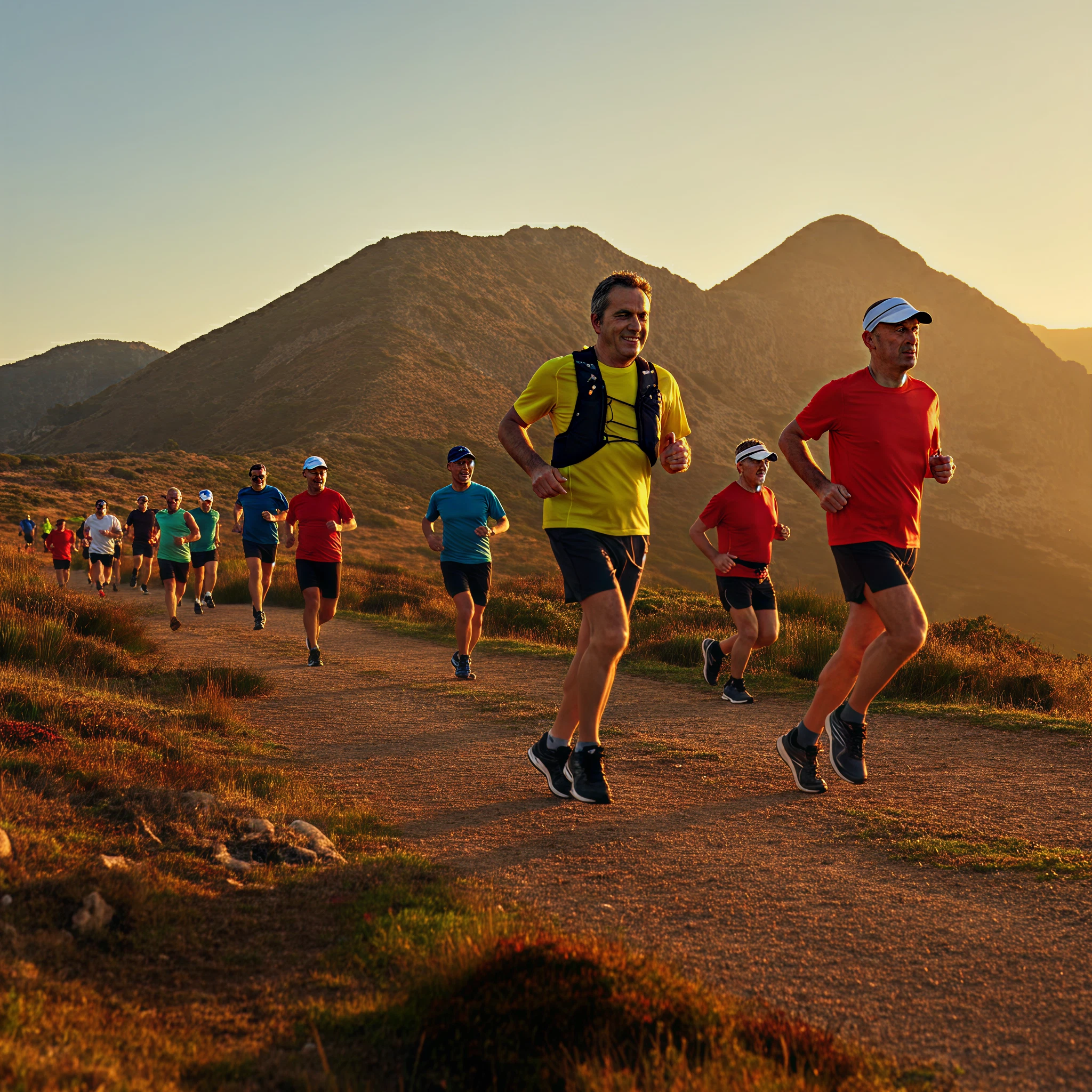When it comes to athleticism, many people believe that age is an insurmountable hurdle—that your twenties are the prime, followed by a slow, inevitable decline. However, for endurance athletes, the story can be quite different. The phrase “age is just a number” isn’t just a platitude; it’s a reality for middle-aged athletes achieving peak stamina and setting unprecedented records in ultra-endurance events. If you’re wondering why stamina can peak in middle age, the answer lies at the intersection of experience, physiology, and mental grit.
The Science Behind Stamina and Aging
It’s true that as we age, our bodies undergo certain physiological changes. One significant shift is a gradual decline in VO₂ max, which measures how much oxygen your body can use during exercise. On average, this decreases by about 5–10% per decade after 30. But here’s the catch: this decline is much less dramatic in athletes who maintain regular intense training. According to Lucie Cowan, a master trainer and medical science expert, the reduction in VO₂ max for highly trained individuals is closer to 3–6% per decade. That means consistent effort can significantly slow the natural dips that aging brings.
But stamina isn’t just about raw physicality. By the time athletes reach their thirties, forties, or beyond, they boast an arsenal of benefits that younger athletes simply can’t match. Years of training lead to enhanced aerobic efficiency, improved muscle adaptation, and a deeper reservoir of technical knowledge. You begin to compensate for any decline in “youthful athleticism” with a combination of smart strategies and experience that can make middle age a peak performance period.
The Role of Experience in Endurance Success
For endurance athletes, mental capacity matters as much as physical ability. Middle-aged athletes often have greater psychological resilience, stronger pacing strategies, and sounder race-day preparation. These qualities tend to outweigh the natural advantages that younger competitors bring to the table. Pacing, for instance, is a refined skill that only grows sharper with time. Mastering this allows seasoned athletes to avoid burnout while running or cycling for hours.
Studies on marathon and ultra-endurance race participants bolster this perspective. While shorter sprints and events favor younger athletes with explosive energy, longer competitions often see those in their forties or even fifties outperforming their younger counterparts. It’s not uncommon for winners of ultra-endurance events to be middle-aged, proving that mental grit and strategic execution are critical factors in achieving stamina-based excellence.
One shining example is Irish athlete Tommy Hughes, who shattered stereotypes in 2020 by setting a marathon world record for his age group at the age of 60 with an astonishing finish time of 2 hours, 30 minutes, and 2 seconds. Such feats demonstrate that milestones once deemed unattainable after a certain age are not only possible but increasingly common.
Why Endurance Sports Favor Middle Age
The endurance advantage for middle-aged athletes is especially pronounced in ultra-endurance events. These include marathons, triathlons, and cycling events that last several hours or even days. Why does middle age lend itself so well to these challenges?
- Aerobic Adaptation
Years of consistent training hone your body’s ability to perform under sustained exertion. While muscle power may dip slightly with age, the cardiovascular system continues to improve its efficiency under proper training.
- Mental Strength
Mental toughness grows with experience. Whether it’s pushing through adversity or staying disciplined during training, middle-aged athletes often bring a psychological edge that’s honed over years of life experience.
- Better Recovery Strategies
By middle age, athletes are more likely to have fine-tuned their recovery routines. This includes understanding nutrition, sleep, and active recovery techniques to maximize results.
- Wisdom in Training
Middle-aged athletes tend to approach their training smarter, not harder. Avoiding overtraining and strategically planning recovery days can help maximize stamina.
- Community and Support
Many athletes in this age bracket tap into social networks, such as running clubs, cycling groups, or online communities, enriching their motivation and guidance.
Lessons for Aspiring Endurance Athletes
If you think middle age might be too late to start working on your stamina goals, think again. Even if endurance sports weren’t part of your twenties or thirties, they’re accessible at any time through consistent and thoughtful training:
- Start Where You Are
Whether you’re walking your first 5K or gearing up for a half-marathon, progress is progress. Begin with manageable goals and build up slowly.
- Prioritize Consistency Over Intensity
Long-term stamina is built on steady, sustainable effort versus going all-out in short spurts.
- Focus on Recovery
Recovery is as vital as training sessions. Make time for stretching, hydration, and proper sleep.
- Learn from Others
Study pacing strategies and race techniques from seasoned athletes. There’s no substitute for community wisdom.
- Set Goals That Excite You
Whether it’s completing a marathon or conquering a 100-mile bike ride, find an achievement that will motivate you to stick with your training.
The Takeaway
The belief that stamina inevitably declines with age is a misconception, especially for endurance athletes. Middle age represents a golden era for those willing to invest in training and cultivate mental and physical resilience. From marathon courses to cycling trails, your thirties, forties, and even fifties could be your time to climb the podium and crush personal bests.
Inspired to take your endurance performance to the next level? Remember, endurance isn’t just about miles logged or hours spent training; it’s about smart strategies, relentless determination, and a love for the sport.
Middle-age athletes and aspiring endurance enthusiasts alike, take heart. Why stamina can peak in middle age isn’t just a catchy headline; it’s a rallying call to prove that the best may still be ahead.








